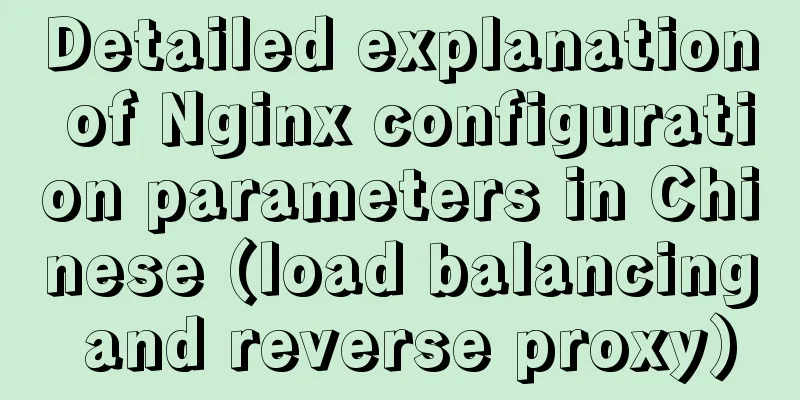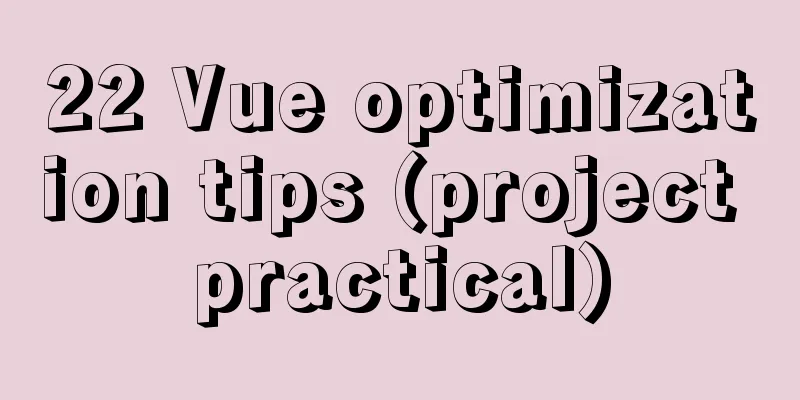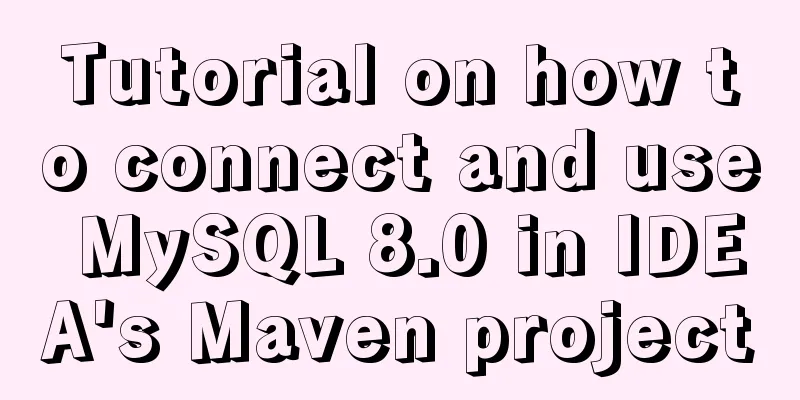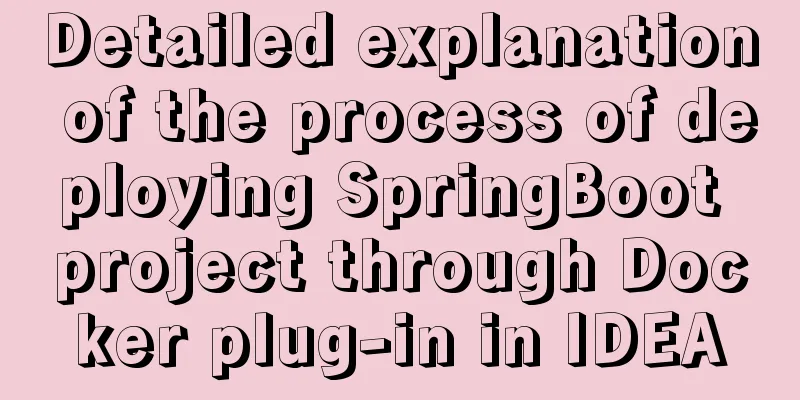Quickjs encapsulates JavaScript sandbox details
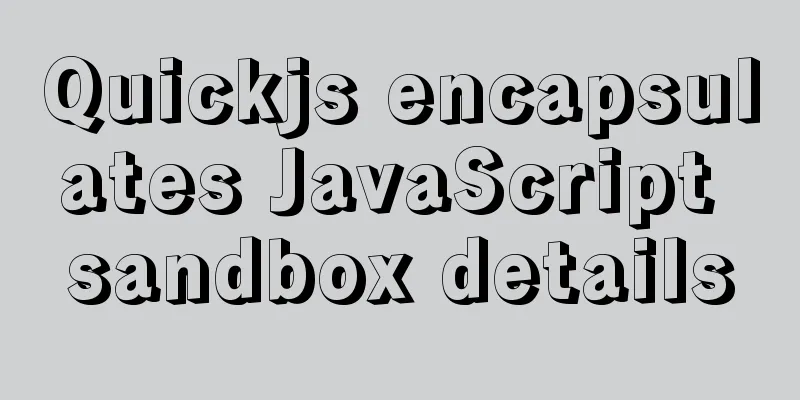
1. Scenario In the previous JavaScript sandbox exploration, the sandbox interface was declared, and some simple codes for executing any third-party js scripts were given, but the complete The encapsulation library of
export interface LowLevelJavascriptVm<VmHandle> {
global: VmHandle;
undefined: VmHandle;
typeof(handle: VmHandle): string;
getNumber(handle: VmHandle): number;
getString(handle: VmHandle): string;
newNumber(value: number): VmHandle;
newString(value: string): VmHandle;
newObject(prototype?: VmHandle): VmHandle;
newFunction(
name: string,
value: VmFunctionImplementation<VmHandle>
): VmHandle;
getProp(handle: VmHandle, key: string | VmHandle): VmHandle;
setProp(handle: VmHandle, key: string | VmHandle, value: VmHandle): void;
defineProp(
handle: VmHandle,
key: string | VmHandle,
descriptor: VmPropertyDescriptor<VmHandle>
): void;
callFunction(
func: VmHandle,
thisVal: VmHandle,
...args: VmHandle[]
): VmCallResult<VmHandle>;
evalCode(code: string): VmCallResult<VmHandle>;
}
The following is an official code example
import { getQuickJS } from "quickjs-emscripten";
async function main() {
const QuickJS = await getQuickJS();
const vm = QuickJS.createVm();
const world = vm.newString("world");
vm.setProp(vm.global, "NAME", world);
world.dispose();
const result = vm.evalCode(`"Hello " + NAME + "!"`);
if (result.error) {
console.log("Execution failed:", vm.dump(result.error));
result.error.dispose();
} else {
console.log("Success:", vm.dump(result.value));
result.value.dispose();
}
vm.dispose();
}
main();
As you can see, after creating the variables in vm, you must remember to call 2. Simplify the underlying APIThere are two main purposes:
2.1 Automatically call dispose The main idea is to automatically collect all values that need to be
import { QuickJSHandle, QuickJSVm } from "quickjs-emscripten";
const QuickJSVmScopeSymbol = Symbol("QuickJSVmScope");
/**
* Add local scope to QuickJSVm. All method calls in local scope no longer need to release memory manually. * @param vm
* @param handle
*/
export function withScope<F extends (vm: QuickJSVm) => any>(
vm: QuickJSVm,
handle: F
): {
value: ReturnType<F>;
dispose(): void;
} {
let disposes: (() => void)[] = [];
function wrap(handle: QuickJSHandle) {
disposes.push(() => handle.alive && handle.dispose());
return handle;
}
//Avoid multi-layer proxy const isProxy = !!Reflect.get(vm, QuickJSVmScopeSymbol);
function dispose() {
if (isProxy) {
Reflect.get(vm, QuickJSVmScopeSymbol)();
return;
}
disposes.forEach((dispose) => dispose());
//Manually release the memory of the closure variable disposes.length = 0;
}
const value = handle(
isProxy
? vm
: new Proxy(vm, {
get(
target: QuickJSVm,
p: keyof QuickJSVm | typeof QuickJSVmScopeSymbol
): any {
if (p === QuickJSVmScopeSymbol) {
return dispose;
}
//Lock the this value of all methods to the QuickJSVm object instead of the Proxy object const res = Reflect.get(target, p, target);
if (
p.startsWith("new") ||
["getProp", "unwrapResult"].includes(p)
) {
return (...args: any[]): QuickJSHandle => {
return wrap(Reflect.apply(res, target, args));
};
}
if (["evalCode", "callFunction"].includes(p)) {
return (...args: any[]) => {
const res = (target[p] as any)(...args);
disposes.push(() => {
const handle = res.error ?? res.value;
handle.alive && handle.dispose();
});
return res;
};
}
if (typeof res === "function") {
return (...args: any[]) => {
return Reflect.apply(res, target, args);
};
}
return res;
},
})
);
return { value, dispose };
}
use
withScope(vm, (vm) => {
const _hello = vm.newFunction("hello", () => {});
const _object = vm.newObject();
vm.setProp(_object, "hello", _hello);
vm.setProp(_object, "name", vm.newString("liuli"));
expect(vm.dump(vm.getProp(_object, "hello"))).not.toBeNull();
vm.setProp(vm.global, "VM_GLOBAL", _object);
}).dispose();
It even supports nested calls, and only needs to call
withScope(vm, (vm) =>
withScope(vm, (vm) => {
console.log(vm.dump(vm.unwrapResult(vm.evalCode("1+1"))));
})
).dispose();
2.2 Provide a better way to create vm values The main idea is to determine the type of
import { QuickJSHandle, QuickJSVm } from "quickjs-emscripten";
import { withScope } from "./withScope";
type MarshalValue = { value: QuickJSHandle; dispose: () => void };
/**
* Simplify the operation of creating complex objects using QuickJSVm * @param vm
*/
export function marshal(vm: QuickJSVm) {
function marshal(value: (...args: any[]) => any, name: string): MarshalValue;
function marshal(value: any): MarshalValue;
function marshal(value: any, name?: string): MarshalValue {
return withScope(vm, (vm) => {
function _f(value: any, name?: string): QuickJSHandle {
if (typeof value === "string") {
return vm.newString(value);
}
if (typeof value === "number") {
return vm.newNumber(value);
}
if (typeof value === "boolean") {
return vm.unwrapResult(vm.evalCode(`${value}`));
}
if (value === undefined) {
return vm.undefined;
}
if (value === null) {
return vm.null;
}
if (typeof value === "bigint") {
return vm.unwrapResult(vm.evalCode(`BigInt(${value})`));
}
if (typeof value === "function") {
return vm.newFunction(name!, value);
}
if (typeof value === "object") {
if (Array.isArray(value)) {
const _array = vm.newArray();
value.forEach((v) => {
if (typeof v === "function") {
throw new Error("Arrays are prohibited from containing functions because names cannot be specified");
}
vm.callFunction(vm.getProp(_array, "push"), _array, _f(v));
});
return _array;
}
if (value instanceof Map) {
const _map = vm.unwrapResult(vm.evalCode("new Map()"));
value.forEach((v, k) => {
vm.unwrapResult(
vm.callFunction(vm.getProp(_map, "set"), _map, _f(k), _f(v, k))
);
});
return _map;
}
const _object = vm.newObject();
Object.entries(value).forEach(([k, v]) => {
vm.setProp(_object, k, _f(v, k));
});
return _object;
}
throw new Error("unsupported type");
}
return _f(value, name);
});
}
return marshal;
}
use
const mockHello = jest.fn();
const now = new Date();
const { value, dispose } = marshal(vm)({
name: "liuli",
age: 1,
sex: false,
hobby: [1, 2, 3],
account:
username: "li",
},
hello: mockHello,
map: new Map().set(1, "a"),
date: now,
});
vm.setProp(vm.global, "vm_global", value);
dispose();
function evalCode(code: string) {
return vm.unwrapResult(vm.evalCode(code)).consume(vm.dump.bind(vm));
}
expect(evalCode("vm_global.name")).toBe("liuli");
expect(evalCode("vm_global.age")).toBe(1);
expect(evalCode("vm_global.sex")).toBe(false);
expect(evalCode("vm_global.hobby")).toEqual([1, 2, 3]);
expect(new Date(evalCode("vm_global.date"))).toEqual(now);
expect(evalCode("vm_global.account.username")).toEqual("li");
evalCode("vm_global.hello()");
expect(mockHello.mock.calls.length).toBe(1);
expect(evalCode("vm_global.map.size")).toBe(1);
expect(evalCode("vm_global.map.get(1)")).toBe("a");
The currently supported types are compared to the JavaScript structured clone algorithm, which is used in many places (
3. Implement common APIs such as console/setTimeout/setInterval Since 3.1 Implementing the console
import { QuickJSVm } from "quickjs-emscripten";
import { marshal } from "../util/marshal";
export interface IVmConsole {
log(...args: any[]): void;
info(...args: any[]): void;
warn(...args: any[]): void;
error(...args: any[]): void;
}
/**
* Define the console api in the vm
* @param vm
* @param logger
*/
export function defineConsole(vm: QuickJSVm, logger: IVmConsole) {
const fields = ["log", "info", "warn", "error"] as const;
const dump = vm.dump.bind(vm);
const { value, dispose } = marshal(vm)(
fields.reduce((res, k) => {
res[k] = (...args: any[]) => {
logger[k](...args.map(dump));
};
return res;
}, {} as Record<string, Function>)
);
vm.setProp(vm.global, "console", value);
dispose();
}
export class BasicVmConsole implements IVmConsole {
error(...args: any[]): void {
console.error(...args);
}
info(...args: any[]): void {
console.info(...args);
}
log(...args: any[]): void {
console.log(...args);
}
warn(...args: any[]): void {
console.warn(...args);
}
}
use defineConsole(vm, new BasicVmConsole()); 3.2 Implementing setTimeoutBasic idea: Implementing setTimeout and clearTimeout based on quickjs
Inject global
clearTimeout: Calls the real
import { QuickJSVm } from "quickjs-emscripten";
import { withScope } from "../util/withScope";
import { VmSetInterval } from "./defineSetInterval";
import { deleteKey } from "../util/deleteKey";
import { CallbackIdGenerator } from "@webos/ipc-main";
/**
* Inject setTimeout method * You need to call {@link defineEventLoop} after injection to make the event loop of vm run * @param vm
*/
export function defineSetTimeout(vm: QuickJSVm): VmSetInterval {
const callbackMap = new Map<string, any>();
function clear(id: string) {
withScope(vm, (vm) => {
deleteKey(
vm,
vm.unwrapResult(vm.evalCode(`VM_GLOBAL.setTimeoutCallback`)),
id
);
}).dispose();
clearInterval(callbackMap.get(id));
callbackMap.delete(id);
}
withScope(vm, (vm) => {
const vmGlobal = vm.getProp(vm.global, "VM_GLOBAL");
if (vm.typeof(vmGlobal) === "undefined") {
throw new Error("VM_GLOBAL does not exist, you need to execute defineVmGlobal first");
}
vm.setProp(vmGlobal, "setTimeoutCallback", vm.newObject());
vm.setProp(
vm.global,
"setTimeout",
vm.newFunction("setTimeout", (callback, ms) => {
const id = CallbackIdGenerator.generate();
//This is already asynchronous, so you must wrap it with withScope(vm, (vm) => {
const callbacks = vm.unwrapResult(
vm.evalCode("VM_GLOBAL.setTimeoutCallback")
);
vm.setProp(callbacks, id, callback);
//This is still asynchronous, so you must wrap it with const timeout = setTimeout(
() =>
withScope(vm, (vm) => {
const callbacks = vm.unwrapResult(
vm.evalCode(`VM_GLOBAL.setTimeoutCallback`)
);
const callback = vm.getProp(callbacks, id);
vm.callFunction(callback, vm.null);
callbackMap.delete(id);
}).dispose(),
vm.dump(ms)
);
callbackMap.set(id, timeout);
}).dispose();
return vm.newString(id);
})
);
vm.setProp(
vm.global,
"clearTimeout",
vm.newFunction("clearTimeout", (id) => clear(vm.dump(id)))
);
}).dispose();
return {
callbackMap,
clear() {
[...callbackMap.keys()].forEach(clear);
},
};
}
use
const vmSetTimeout = defineSetTimeout(vm);
withScope(vm, (vm) => {
vm.evalCode(`
const begin = Date.now()
setInterval(() => {
console.log(Date.now() - begin)
}, 100)
`);
}).dispose();
vmSetTimeout.clear();
3.3 Implementing setInterval Basically, it is similar to implementing the
import { QuickJSVm } from "quickjs-emscripten";
import { withScope } from "../util/withScope";
import { deleteKey } from "../util/deleteKey";
import { CallbackIdGenerator } from "@webos/ipc-main";
export interface VmSetInterval {
callbackMap: Map<string, any>;
clear(): void;
}
/**
* Inject setInterval method * You need to call {@link defineEventLoop} after injection to make the event loop of vm run * @param vm
*/
export function defineSetInterval(vm: QuickJSVm): VmSetInterval {
const callbackMap = new Map<string, any>();
function clear(id: string) {
withScope(vm, (vm) => {
deleteKey(
vm,
vm.unwrapResult(vm.evalCode(`VM_GLOBAL.setTimeoutCallback`)),
id
);
}).dispose();
clearInterval(callbackMap.get(id));
callbackMap.delete(id);
}
withScope(vm, (vm) => {
const vmGlobal = vm.getProp(vm.global, "VM_GLOBAL");
if (vm.typeof(vmGlobal) === "undefined") {
throw new Error("VM_GLOBAL does not exist, you need to execute defineVmGlobal first");
}
vm.setProp(vmGlobal, "setIntervalCallback", vm.newObject());
vm.setProp(
vm.global,
"setInterval",
vm.newFunction("setInterval", (callback, ms) => {
const id = CallbackIdGenerator.generate();
//This is already asynchronous, so you must wrap it with withScope(vm, (vm) => {
const callbacks = vm.unwrapResult(
vm.evalCode("VM_GLOBAL.setIntervalCallback")
);
vm.setProp(callbacks, id, callback);
const interval = setInterval(() => {
withScope(vm, (vm) => {
vm.callFunction(
vm.unwrapResult(
vm.evalCode(`VM_GLOBAL.setIntervalCallback['${id}']`)
),
vm.null
);
}).dispose();
}, vm.dump(ms));
callbackMap.set(id, interval);
}).dispose();
return vm.newString(id);
})
);
vm.setProp(
vm.global,
"clearInterval",
vm.newFunction("clearInterval", (id) => clear(vm.dump(id)))
);
}).dispose();
return {
callbackMap,
clear() {
[...callbackMap.keys()].forEach(clear);
},
};
}
3.4 Implementing the Event Loop But one thing is that
const { log } = defineMockConsole(vm);
withScope(vm, (vm) => {
vm.evalCode(`Promise.resolve().then(()=>console.log(1))`);
}).dispose();
expect(log.mock.calls.length).toBe(0);
vm.executePendingJobs();
expect(log.mock.calls.length).toBe(1);
So we can use a function that automatically calls
import { QuickJSVm } from "quickjs-emscripten";
export interface VmEventLoop {
clear(): void;
}
/**
* Define the event loop mechanism in vm, try to loop and execute the waiting asynchronous operations * @param vm
*/
export function defineEventLoop(vm: QuickJSVm) {
const interval = setInterval(() => {
vm.executePendingJobs();
}, 100);
return {
clear() {
clearInterval(interval);
},
};
}
Now just call
const { log } = defineMockConsole(vm);
const eventLoop = defineEventLoop(vm);
try {
withScope(vm, (vm) => {
vm.evalCode(`Promise.resolve().then(()=>console.log(1))`);
}).dispose();
expect(log.mock.calls.length).toBe(0);
await wait(100);
expect(log.mock.calls.length).toBe(1);
finally
eventLoop.clear();
}
4. Realize communication between sandbox and system Now, what our sandbox still lacks is a communication mechanism, so let's implement an The core is to implement Communication between sandbox and system:
import { QuickJSHandle, QuickJSVm } from "quickjs-emscripten";
import { marshal } from "../util/marshal";
import { withScope } from "../util/withScope";
import { IEventEmitter } from "@webos/ipc-main";
export type VmMessageChannel = IEventEmitter & {
listenerMap: Map<string, ((msg: any) => void)[]>;
};
/**
* Define message communication * @param vm
*/
export function defineMessageChannel(vm: QuickJSVm): VmMessageChannel {
const res = withScope(vm, (vm) => {
const vmGlobal = vm.getProp(vm.global, "VM_GLOBAL");
if (vm.typeof(vmGlobal) === "undefined") {
throw new Error("VM_GLOBAL does not exist, you need to execute defineVmGlobal first");
}
const listenerMap = new Map<string, ((msg: string) => void)[]>();
const messagePort = marshal(vm)({
//region vm process callback function definition listenerMap: new Map(),
//emitMain(channel: QuickJSHandle, msg: QuickJSHandle) for vm process {
const key = vm.dump(channel);
const value = vm.dump(msg);
if (!listenerMap.has(key)) {
console.log("The main process does not listen to the api: ", key, value);
return;
}
listenerMap.get(key)!.forEach((fn) => {
try {
fn(value);
} catch (e) {
console.error("An error occurred while executing the callback function: ", e);
}
});
},
//endregion
});
vm.setProp(vmGlobal, "MessagePort", messagePort.value);
//function emitVM(channel: string, msg: string) for main process {
withScope(vm, (vm) => {
const _map = vm.unwrapResult(
vm.evalCode("VM_GLOBAL.MessagePort.listenerMap")
);
const _get = vm.getProp(_map, "get");
const _array = vm.unwrapResult(
vm.callFunction(_get, _map, vm.newString(channel))
);
if (!vm.dump(_array)) {
return;
}
for (
let i = 0, length = vm.dump(vm.getProp(_array, "length"));
i < length;
i++
) {
vm.callFunction(
vm.getProp(_array, vm.newNumber(i)),
vm.null,
marshal(vm)(msg).value
);
}
}).dispose();
}
return {
emit: emitVM,
offByChannel(channel: string): void {
listenerMap.delete(channel);
},
on(channel: string, handle: (data: any) => void): void {
if (!listenerMap.has(channel)) {
listenerMap.set(channel, []);
}
listenerMap.get(channel)!.push(handle);
},
listenerMap,
} as VmMessageChannel;
});
res.dispose();
return res.value;
}
use
defineVmGlobal(vm);
const messageChannel = defineMessageChannel(vm);
const mockFn = jest.fn();
messageChannel.on("hello", mockFn);
withScope(vm, (vm) => {
vm.evalCode(`
class QuickJSEventEmitter {
emit(channel, data) {
VM_GLOBAL.MessagePort.emitMain(channel, data);
}
on(channel, handle) {
if (!VM_GLOBAL.MessagePort.listenerMap.has(channel)) {
VM_GLOBAL.MessagePort.listenerMap.set(channel, []);
}
VM_GLOBAL.MessagePort.listenerMap.get(channel).push(handle);
}
offByChannel(channel) {
VM_GLOBAL.MessagePort.listenerMap.delete(channel);
}
}
const em = new QuickJSEventEmitter()
em.emit('hello', 'liuli')
`);
}).dispose();
expect(mockFn.mock.calls[0][0]).toBe("liuli");
messageChannel.listenerMap.clear();
5. Implement IJavaScriptShadowbox Finally, we put together the functions implemented above to implement
import { IJavaScriptShadowbox } from "./IJavaScriptShadowbox";
import { getQuickJS, QuickJS, QuickJSVm } from "quickjs-emscripten";
import {
BasicVmConsole,
defineConsole,
defineEventLoop,
defineMessageChannel,
defineSetInterval,
defineSetTimeout,
defineVmGlobal,
VmEventLoop,
VmMessageChannel,
VmSetInterval,
withScope,
} from "@webos/quickjs-emscripten-utils";
export class QuickJSShadowbox implements IJavaScriptShadowbox {
private vmMessageChannel: VmMessageChannel;
private vmEventLoop: VmEventLoop;
private vmSetInterval: VmSetInterval;
private vmSetTimeout: VmSetInterval;
private constructor(readonly vm: QuickJSVm) {
defineConsole(vm, new BasicVmConsole());
defineVmGlobal(vm);
this.vmSetTimeout = defineSetTimeout(vm);
this.vmSetInterval = defineSetInterval(vm);
this.vmEventLoop = defineEventLoop(vm);
this.vmMessageChannel = defineMessageChannel(vm);
}
destroy(): void {
this.vmMessageChannel.listenerMap.clear();
this.vmEventLoop.clear();
this.vmSetInterval.clear();
this.vmSetTimeout.clear();
this.vm.dispose();
}
eval(code: string): void {
withScope(this.vm, (vm) => {
vm.unwrapResult(vm.evalCode(code));
}).dispose();
}
emit(channel: string, data?: any): void {
this.vmMessageChannel.emit(channel, data);
}
on(channel: string, handle: (data: any) => void): void {
this.vmMessageChannel.on(channel, handle);
}
offByChannel(channel: string) {
this.vmMessageChannel.offByChannel(channel);
}
private static quickJS: QuickJS;
static async create() {
if (!QuickJSShadowbox.quickJS) {
QuickJSShadowbox.quickJS = await getQuickJS();
}
return new QuickJSShadowbox(QuickJSShadowbox.quickJS.createVm());
}
static destroy() {
QuickJSShadowbox.quickJS = null as any;
}
}
Use at the system level
const shadowbox = await QuickJSShadowbox.create();
const mockConsole = defineMockConsole(shadowbox.vm);
shadowbox.eval(code);
shadowbox.emit(AppChannelEnum.Open);
expect(mockConsole.log.mock.calls[0][0]).toBe("open");
shadowbox.emit(WindowChannelEnum.AllClose);
expect(mockConsole.log.mock.calls[1][0]).toBe("all close");
shadowbox.destroy();
Use in sandbox
const eventEmitter = new QuickJSEventEmitter();
eventEmitter.on(AppChannelEnum.Open, async () => {
console.log("open");
});
eventEmitter.on(WindowChannelEnum.AllClose, async () => {
console.log("all close");
});
6. Current limitations of quickjs sandboxThe following are some of the limitations of the current implementation, which can also be improved in the future console only supports common log/info/warn/error methods This is the end of this article about the details of quickjs encapsulation of JavaScript sandbox. For more relevant quickjs encapsulation of JavaScript sandbox content, please search for previous articles on 123WORDPRESS.COM or continue to browse the related articles below. I hope everyone will support 123WORDPRESS.COM in the future! You may also be interested in:
|
<<: How to view the database installation path in MySQL
>>: Python writes output to csv operation
Recommend
mysql5.7.17.msi installation graphic tutorial
mysql-5.7.17.msi installation, follow the screens...
The latest version of MySQL 8.0.22 download and installation super detailed tutorial (Windows 64 bit)
Table of contents Preface 1. Download MySQL 8.0.2...
Practical notes on installing Jenkins with docker-compose
Create a Directory cd /usr/local/docker/ mkdir je...
Mini Program Custom TabBar Component Encapsulation
This article example shares the specific code for...
Differences between Windows Server 2008R2, 2012, 2016, and 2019
Table of contents Common version introduction Com...
Detailed explanation of MySQL 8's new feature ROLE
What problems does MySQL ROLE solve? If you are a...
How complicated is the priority of CSS styles?
Last night, I was looking at an interview question...
When installing a virtual machine on Thinkpad VMware, the message "This host supports Intel VT-x, but Intel VT-x is disabled" appears (problem solution)
Today, when I was using VMware to install a new v...
iview implements dynamic form and custom verification time period overlap
Dynamically adding form items iview's dynamic...
Nginx cache files and dynamic files automatic balancing configuration script
nginx Nginx (engine x) is a high-performance HTTP...
Summary of MySQL lock related knowledge
Locks in MySQL Locks are a means to resolve resou...
Database issues and pitfalls in connecting to cloud servers with Navicat Premium15
When using a cloud server, we sometimes connect t...
The DOCTYPE mode selection mechanism of well-known browsers
Document Scope This article covers mode switching...
How to manually deploy war packages through tomcat9 on windows and linux
The results are different in Windows and Linux en...
Detailed explanation of homology and cross-domain required for front-end interviews
Preface As we all know, the browser's homolog...




